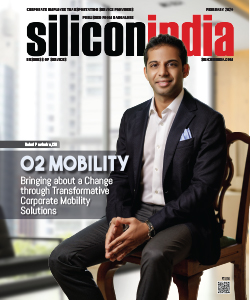Study Finds Major Cost Advantages in New Enterprise LTE Wireless Approach
BANGALORE: Airvana, provider of small cell solutions, and Real Wireless, independent expert advisors in wireless technology, today announced a study revealing that a Cloud RAN small cell solution can reduce costs by 69 percent, compared to traditional distributed antenna system (DAS) solutions.
The Real Wireless study concluded that Cloud RAN (or C-RAN) Small Cells were less expensive in all scenarios considered, including multi-operator deployments where DAS has previously been considered superior to small cells. The study examined the use of C-RAN LTE small cells as an alternative to LTE DAS in both upgrades of existing DAS and in new “greenfield” DAS deployments. Both large and small building deployments were analyzed, and both active and passive DAS. The full white paper, exploring the analysis and results in detail, is available at: www.airvana.com/c-ran-economics/.
Cloud RAN (C-RAN) architecture achieves performance and economic benefits by centralizing “baseband” and scheduling functions– the core processing by which the system allocates wireless resources among users and services. Airvana’s OneCell, which recently won the GSMA’s Best Mobile Technology Breakthrough award at Mobile World Congress 2015, was used as the basis of the comparison to DAS. It uses a C-RAN architecture and goes even further by tightly coordinating the LTE access points throughout a building to behave as a single cell, eliminating interference and handovers. As such, C-RAN small cells share many of the positive attributes of DAS that have been the preferred indoor wireless solution for large enterprises and public spaces. Due to its high costs, however, DAS is practical for use in only a tiny fraction of enterprise buildings.
Real Wireless was commissioned to conduct the study due to their extensive experience in real-world in-building wireless solutions. The study authors have been responsible for the design and installation of hundreds of in-building systems. As a result Real Wireless was able to take a holistic view of a rollout. Not only were equipment costs taken into account, but also related costs such as cable materials, installation labor, project management, design and recurring operating expenses – in all over 90 line items for each scenario.
Professor Simon Saunders, Real Wireless director of technology, led the study team. “While we have long seen the potential for enterprise small cells, this is the first time a definitive cost comparison has been conducted. Significant savings are encountered even for multi-operator situations and smaller buildings, heralding potentially explosive growth on the tiny (2 Pct) penetration of dedicated wireless solutions in office buildings to date.”
The analysis found that many of the savings of the OneCell C-RAN approach derive from its simplified “Wi-Fi-like” deployment model, using standard Ethernet LANs for in-building distribution rather than fiber/coax cabling and remote radio heads. This approach generated significant savings in solution design, cabling materials, installation labor, and project management. It also improved ongoing flexibility to add and redistribute capacity in response to changes in user demand.
“The realization that enterprises were under-served by legacy solutions motivated us to develop OneCell,” said Richard Lowe, president and CEO, Airvana. “The rigorous analysis by Real Wireless confirms the value of C-RAN small cells. OneCell will make quality indoor LTE service affordable to a much broader enterprise segment.”
Read Also: Airvana OneCell Wins Top Mobile Technology Award at MWC 2015 Global Mobile Awards
Entrepreneurs Can Apply For 26 Services Online From June



